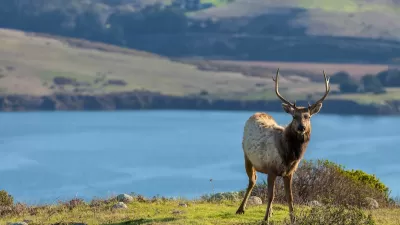A study reveals that L.A. is a surprising hotspot for insect and spider biodiversity, with diversity driven more by proximity to mountains and stable temperatures than by land value.

A recent study highlights that urban Los Angeles is a surprising haven for insect and spider biodiversity. Analyzing data from the Los Angeles Natural History Museum’s BioSCAN project, researchers found that the most significant predictors of arthropod diversity in the city are proximity to the mountains and consistent temperature throughout the year. This study challenges the "luxury hypothesis," which posits that wealthier neighborhoods, with more greenery, should naturally support greater biodiversity. Contrary to this assumption, the research revealed that land value had minimal impact on the diversity of spiders and insects.
The BioSCAN project, which collected data from traps set up by volunteers between 2014 and 2018, identified over 400 distinct bug species across Greater Los Angeles. The findings show that despite urban development and habitat loss, some species thrive in city environments. Urban areas often attract invasive species, such as the brown widow spider, which has been replacing native spiders. Such shifts in species populations underline the importance of maintaining insect diversity for urban ecosystem health.
Understanding urban biodiversity is crucial as cities are projected to expand significantly in the coming decades. Although the study sheds light on factors affecting arthropod diversity, more research is needed to fully grasp how this diversity impacts urban ecosystems. Future studies will examine seasonal changes in bug populations and incorporate bioacoustic data to assess the role of bats in these ecosystems. Insights gained could help guide policy and planning to better support insect biodiversity amidst growing cities.

Planetizen Federal Action Tracker
A weekly monitor of how Trump’s orders and actions are impacting planners and planning in America.

Chicago’s Ghost Rails
Just beneath the surface of the modern city lie the remnants of its expansive early 20th-century streetcar system.

San Antonio and Austin are Fusing Into one Massive Megaregion
The region spanning the two central Texas cities is growing fast, posing challenges for local infrastructure and water supplies.

Since Zion's Shuttles Went Electric “The Smog is Gone”
Visitors to Zion National Park can enjoy the canyon via the nation’s first fully electric park shuttle system.

Trump Distributing DOT Safety Funds at 1/10 Rate of Biden
Funds for Safe Streets and other transportation safety and equity programs are being held up by administrative reviews and conflicts with the Trump administration’s priorities.

German Cities Subsidize Taxis for Women Amid Wave of Violence
Free or low-cost taxi rides can help women navigate cities more safely, but critics say the programs don't address the root causes of violence against women.
Urban Design for Planners 1: Software Tools
This six-course series explores essential urban design concepts using open source software and equips planners with the tools they need to participate fully in the urban design process.
Planning for Universal Design
Learn the tools for implementing Universal Design in planning regulations.
planning NEXT
Appalachian Highlands Housing Partners
Mpact (founded as Rail~Volution)
City of Camden Redevelopment Agency
City of Astoria
City of Portland
City of Laramie





























